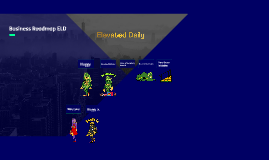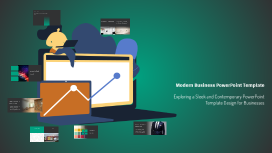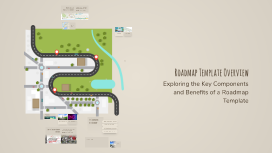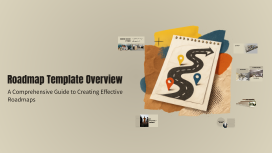Business Roadmap
Transcript: Business Roadmap Overview Concise overview of the business roadmap: outlines the company vision, strategic priorities, major milestones, resource requirements, and execution timeline to guide decisions and track progress. Timeline and Key Milestones Phased roadmap showing milestones, deliverables, and go-to-market dates across the next several quarters. Q2 2026 Q1 2027 Q3 2026 Q4 2025 Private beta and pilot programs with select customers; collect feedback and iterate product fixes. Optimize and expand: analyze KPIs, implement product refinements, and evaluate new market or channel expansion opportunities. Official go-to-market launch: marketing campaigns start, sales enablement materials distributed, and first paid customers acquired. Planning, market research, and finalizing product requirements; secure initial resources and confirm success metrics. Q1 2026 Q4 2026 Product design and MVP development completed; key integrations built and initial QA cycles started. Scale operations: expand customer support, optimize onboarding, and ramp sales channels to drive revenue growth. Clear Vision Statement Position the company as the market leader in target segments by delivering reliable, innovative solutions that consistently increase customer value and loyalty. Core Offerings Defines primary products and services, their scope, target use cases, and tiered packaging (e.g., Basic, Pro, Enterprise) to address customer needs and revenue segments. Competitive Differentiation Strategic Objectives (3-year) Highlights unique value—proprietary features, superior UX, pricing model, integrations, or service levels—that separate offerings from competitors and justify customer choice. Product and Service Strategy Product Lifecycle Outlines stages from concept and MVP through iterative development, scaling, and maintenance; prioritizes rapid validation, customer feedback loops, and scheduled updates. Set specific objectives: grow revenue sustainably, capture defined market share in priority segments, improve customer retention and satisfaction, and expand core offerings within three years. Customer Experience & Support Vision and Objectives Specifies post‑purchase services—onboarding, documentation, SLAs, and feedback channels—to maximize adoption, retention, and lifetime value. Timebound Targets & Metrics Define measurable targets and KPIs (ARR, market share, NPS, churn, time-to-market) with clear owners and quarterly checkpoints to monitor progress and adjust tactics. Target Customer Segments Prioritize distinct customer groups so efforts match real demand: small and medium businesses that need cost-efficient solutions, enterprise accounts requiring customization and security, and channel partners/resellers who extend reach. Customer Needs & Buying Drivers Alignment & Competitive Positioning Market Opportunity Focus on the primary needs driving purchase decisions: clear ROI/cost savings, easy integration with existing tools, fast implementation/onboarding, and responsive support and security assurances. Align product roadmap and go-to-market plans with competitive differentiation—leverage core strengths, address market gaps, and prioritize initiatives that deliver the greatest strategic advantage. Competitive Gaps & Differentiation Identify gaps in competitor offerings where we can differentiate: better user experience, deeper integrations, stronger customer success, or pricing/packaging flexibility—target these to capture under-served demand. Business Roadmap Target Channels (Owned • Paid • Partner) Acquisition Strategy (Awareness → Conversion) Select channels that maximize reach and efficiency: Owned channels (website, app, email) drive retention and lower long‑term CAC; Paid channels (search, social ads, display) scale demand quickly; Partner and retail channels expand market coverage and leverage third‑party trust. Prioritize by CAC, LTV potential, and integration effort. Use a staged acquisition approach: awareness (content, PR, paid reach) to build demand; engagement and nurture (email sequences, retargeting, demos) to qualify interest; conversion (free trials, promotions, direct sales outreach) to close customers. Continuously test creatives and measure CAC, conversion rate, and payback period per channel. Strategic milestones, initiatives, and timelines to grow revenue, scale operations, and manage risk Resource and Budget Allocation Allocate budget, headcount, and technology investments to initiatives based on priority and expected ROI. Assign clear owners and required skill sets, set phased funding with contingency reserves, and schedule regular reviews to adjust allocations as needs evolve. Immediate Priorities Confirm and prioritize the initial actions required to launch execution: finalize the project plan, secure budget approval, and agree on MVP scope so the team can start work immediately. Assigned Ownership Assign clear owners for each workstream (Project Lead, Product, Marketing, Ops) and establish decision

















